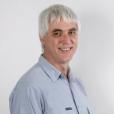
Physical Properties Measurement System
System includes a vibrating-sample magnetometer, AC susceptibility, heat capacity and resistivity measurement capability.

Showing 1101 - 1120 of 1633 results

System includes a vibrating-sample magnetometer, AC susceptibility, heat capacity and resistivity measurement capability.

In this resource, students learn about our growing understanding of Aboriginal and Torres Strait Islander histories and cultures using radiocarbon dating. Students will:
- learn about radiocarbon dating and its applications to cultural heritage materials.
- analyse and interpret different texts and videos to better understand Aboriginal and Torres Strait Islander cultures.
- build literacy and numeracy capabilities using cloze passages, writing a glossary, interpreting graphs, answering comprehension questions, and making a timeline and a map to summarise the research stories.
The activities address these Australian Curriculum Science Understanding and Inquiry Skills:
Students learn:
- all matter is made of atoms that are composed of protons, neutrons and electrons; natural radioactivity arises from the decay of nuclei in atoms (ACSSU177)
- investigating how radiocarbon and other dating methods have been used to establish that Aboriginal Peoples have been present on the Australian continent for more than 60,000 years (OI.6)
- to communicate scientific ideas and information for a particular purpose, including constructing evidence-based arguments and using appropriate scientific language, conventions and representations (ACSIS174)


John Lawson is a Specialist Hydrometallurgist working with the ANSTO Minerals business unit.




Role at ANSTO
A cross-disciplinary team has used laboratory-based and synchrotron-based infrared spectroscopy imaging techniques to monitor the waxy surface of living plant leaves in real-time to gain insights into plant physiology in response to disease, biological changes or environmental stress.
Retrieving an Antarctic ice core more than a million years old presents challenges and opportunities.
Mathematical insights explain inconsistencies in experimental data: pyrochlore transformation into defect fluorite or not?

In 2017, ANSTO's CEO signed a Memorandum of Understanding with Sri Lanka to work together to investigate the epidemiology of Chronic Kidney Disease of unknown origin (CKDu).
Soft X-ray experiments used to characterise new thin film topological Dirac Semimetal.
Research makes it possible to assess if and how rocky coasts, which make up the majority of the world’s coasts including Australia and New Zealand, will respond to changes in marine conditions.
On behalf of Australia, ANSTO, the only nuclear reactor facility in Australia, supports the International Atomic Energy Agency (IAEA) to undertake its role in facilitating national, regional, and international efforts to enhance nuclear security, including measures to protect against nuclear terrorism.
Successful synthesis of nano-material that improves catalytic converter efficiency.
Whilst at ANSTO’s Australian Synchrotron today, Prime Minister Scott Morrison announced new funding for the Australian Precision Medicine Enterprise (APME) Project. The Australian Government will contribute $23m in grant funding under the Manufacturing Collaboration Stream of the Modern Manufacturing Initiative (MMI) towards the $71.2m project.
Research confirms that fraudulent Kakadu plum extracts are in circulation online and in the international marketplace.
Robert Russell has been awarded his PhD